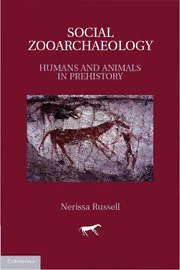
Social Zooarchaeology: Humans and Animals in Prehistory PDF
02011·2.473 MB·English
Most books are stored in the elastic cloud where traffic is expensive. For this reason, we have a limit on daily download.
Preview Social Zooarchaeology: Humans and Animals in Prehistory
Description:
This is the first book to provide a systematic overview of social zooarchaeology, which takes a holistic view of human-animal relations in the past. Until recently, archaeological analysis of faunal evidence has primarily focused on the role of animals in the human diet and subsistence economy. This book, however, argues that animals have always played many more roles in human societies: as wealth, companions, spirit helpers, sacrificial victims, totems, centerpieces of feasts, objects of taboos, and more. These social factors are as significant as taphonomic processes in shaping animal bone assemblages. Nerissa Russell uses evidence derived from not only zooarchaeology, but also ethnography, history, and classical studies to suggest the range of human-animal relationships and to examine their importance in human society. Through exploring the significance of animals to ancient humans, this book provides a richer picture of past societies.
See more
The list of books you might like
Most books are stored in the elastic cloud where traffic is expensive. For this reason, we have a limit on daily download.
